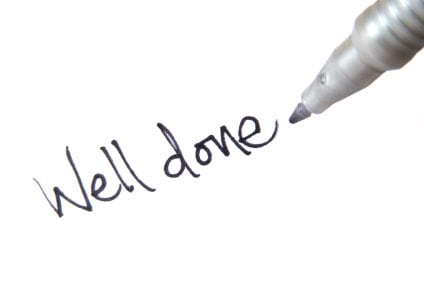- sales
- Blog post
If it doesn’t hurt, you’re not doing it right
We all like to get good feedback. For some — including many who design and deliver sales training — it’s how they get evaluated. If the training gets rave reviews from learners, it’s judged a success. If you get lots of complaints, well … maybe it’s time to find a new line of work.
The only trouble is, high marks from users don’t guarantee that the training was effective. In fact, they could mean just the opposite.
Desirable difficulties
Earlier this year, I had an opportunity to visit the Bjork Learning and Forgetting Lab at UCLA — one of the world’s pre-eminent research centers on learning. (For a fuller report on my visit, go here.) One of its areas of focus is something called “desirable difficulties.” Researchers there have acccumulated tons of evidence showing that the more easily something is learned, the less likely that it will stick. I got to take part in an experiment, and it was eye opening. The learning strategy that felt most effective to me as a learner produced the worst results. It was hard to believe — even though I already knew about desirable difficulties.
If you think about it, desirable difficulties make sense. When you have to struggle to learn something, your brain is fully engaged. As you work through it, the knowledge gets more and more embedded. And the psychic cost of acquiring it makes it all that more important to you.
But that creates a conundrum for those delivering the knowledge. In the university setting, Principal Investigator Elizabeth Ligon Bjork pointed out to me, professors’ careers can rise and fall based on student evaluations such as those on the Web site Rate My Professor. If you get a lot of bad reviews, you’re going to get fewer students signing up for your courses in the future. You’re going to get more students (and, these days, parents) complaining to the administration. Academic freedom notwithstanding, professors feel the heat. Sure you can stand on principle, but if you can find ways to help students learn more easily, why not? Isn’t that what good teachers do?
In the world of workplace training, the pressures are even more intense. There are many ways to evaluate training, but the easiest and most common is to ask for learner evaluations. In many if not most cases, that’s the only scorecard you get.
Learner evaluations aren’t going away, so here’s one do and two don’ts:
1. Don’t freak out if you get some pushback or a bad evaluation. If you’re getting nothing but rave reviews, you may not be challenging people enough.
2. Do figure out what’s behind the scores. As one of the postdocs I met with at the Bjork Lab said, “There are desirable difficulties and undesirable difficulties.” If people are unhappy because they couldn’t hear the speaker or the topic wasn’t relevant, those are things that need to be fixed. If they’re complaining because the concepts were hard to understand, that may be exactly what you want.
3. Don’t rely solely on learner evaluations to judge the effectiveness of your course. I’ve blogged before about the difficulty of finding good metrics to evaluate training. But at the end of the day, what matters most is outcomes, not feelings.

Get a demo of all our training features
Connect with an expert for a one-on-one demonstration of how BTS Total Access can help develop your team.



